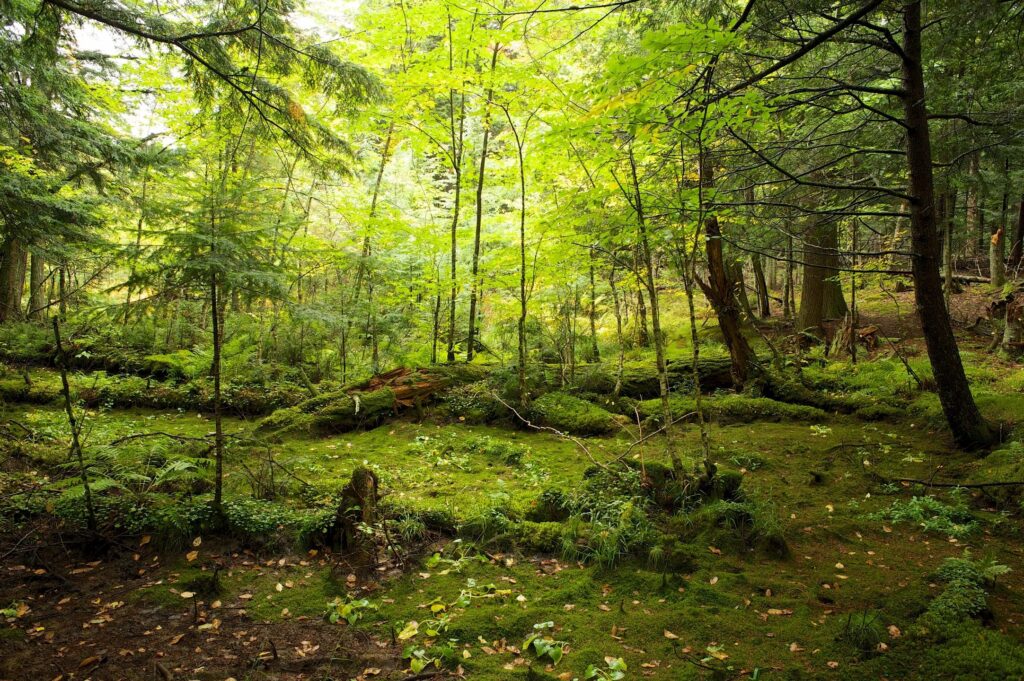The Amazon Rainforest in Brazil: The Amazon rainforest (also known as Amazonia) is the world’s largest forest, encompassing around 2.1 million square miles and ranking first among the world’s most extensive forests. Two-thirds of the rainforest is located in Brazil. Here are more facts about the Amazon rainforest.
· It is estimated that the Amazon jungle is home to around 30 million people. Approximately 1.6 million indigenous people live in this area, divided into more than 400 different indigenous communities. Some tribes are separated from the rest of the world and choose not to communicate with it.
· In the Amazon, indigenous peoples have maintained, preserved, and improved the jungle for thousands of years while being a wholly integrated part. Currently, indigenous peoples have formed their organizations in each of the nine nations in the Amazon area. The indigenous movements have played a crucial role in the struggle for control of this unique forest.
Medicine in The Amazon Rainforest in Brazil
· For indigenous Amazonians, practically every plant in the jungle has a medical purpose in some way or another (many of which have been co-opted by Western pharmaceutical companies to create familiar drugs). Some commonly used plants include:
– Yerba mate, used to treat asthma and hay fever, combat fatigue, and improve digestion
– Boldo, which is used as a laxative, liver tonic, and diuretic
– Cinchona, a source of natural quinine, is used to treat malaria and headaches, leg cramps, and colds.
Scientists are actively investigating the use of a cat’s claw as a potential cancer treatment option.
The People of The Amazon Rainforest in Brazil
· The majority of indigenous people in the Amazon will seek treatment from a traditional shaman (known locally as curanderos) before seeking aid from Western medicine. For ages, the practice of shamanism has been passed down from generation to generation. It combines spirituality with natural science. The traditions have been passed down from generation to generation for ages. Today, the shamanic practice is at dire risk of extinction because it is challenging to locate students prepared to put themselves through the rigorous training necessary to learn shamanic healing procedures.
· The unfortunate result of deforestation in the Amazon (particularly in the Brazilian section) has led conservation organizations to categorize more than 150 bird species as at high risk of extinction shortly. Over 40 of these species are now listed as endangered or critically endangered.
- The banded cotinga
- The hyacinth macaw
- The purple-winged ground dove
- The red-browed Amazon are just a few of the severely endangered Amazonian birds that have been identified.
Species of the Amazon Rainforest in Brazil
A total of over 30 million species have been identified in the Amazon River basin, with thousands of brand-new species being discovered every year. An estimated 2.5 million of these are insects, according to estimates. The Amazon rainforest is believed to hold as many as 70,000 distinct species of insects on a single acre of land. Scientists have discovered as many as 700 different species of beetle on a single tree!
- The assassin insect
- Fishing spider
- Diamond caterpillar
- Leaping stick
- Leaf-mimicking katydid
- Pink toe tarantula are just a few of the more interesting creepy crawlies that may be found in the Amazon.
· More than 1,500 species of amphibians have been identified in the Amazon, most of which are frogs, toads, and tree frogs. In certain rainforest places, you might discover up to 80 different kinds of frogs in a short area of woodland. In particular, the poison dart frogs, often found on the jungle floor and most active during daylight hours, are the most striking of these species. These frogs, which may be seen in various hues ranging from brilliant red and orange to stunning blues and greens, are famously dangerous. To kill their prey, some indigenous Amazon hunters coated the ends of their darts with poison extracted from the frog’s skin.
Monkeys of the Amazon Rainforest in Brazil
· A total of roughly 150 distinct monkeys species have been identified as inhabiting the Amazon jungle. It is home to various animals, including:
- Four types of woolly primates
- Squirrel monkeys
- A few titi monkeys
- Fifteen different tamarin monkeys
- Nine different kinds of howler monkeys
- Spider monkeys
- Capuchin monkeys
Several rare species, such as the shaggy-furred monk saki, the bald uakari, and the nocturnal night monkey, may be found in the area (a.k.a. owl monkey).
· A terrible reputation has been established for piranha due to their representation in cheesy B-movies and erroneous mythology, among other factors. These magnificent fish with red-orange bellies may be found throughout the Peruvian Amazon and range in length from 5.5 to 10.25 inches. They are found in schools throughout the Amazon. Despite their image as deadly predators, scientific investigation has discovered that they’re shy opportunists that band together primarily for protection from other predators. On the other hand, Piranhas are omnivores, and if the occasion presents itself, they will resort to cannibalism.
Jaguars of the Amazon Rainforest in Brazil
· It is one of the jaguar’s few surviving strongholds, which you can find in the Amazon jungle. Jaguar populations are rapidly diminishing due to unlawful poaching and habitat degradation as a result of deforestation. It is thought that only approximately 6000 individuals remain in the Amazon rainforest today, and travelers are very seldom able to encounter these elusive animals, which are more active at night and are therefore harder to spot. These large cats are skilled climbers, swimmers, and hunters, with Baird’s tapir being a favored prey item for these felines. Brazil is where you’ll find the most sightings of this species.
· The whole Amazon area is typically hot and humid all year long. Exceptions include the winter months when it is cold and dry. While the dry season (June through October) is hot and humid, the average daily high temperature is approximately 100 degrees Fahrenheit. The odd tropical shower to help keep things a little more bearable. During the rainy season (November through May), when more than 60 percent of the region’s rainfall falls, average maximum temperatures are around 12 degrees colder than during the dry season. However, due to the increased humidity in the forest, the air feels excessively muggy and oppressive.
Plant Species
· Amazon rainforest basin is home to about 40,000 distinct plant species, including hundreds of various ferns and thousands upon thousands (if not millions) of different species of flowering plants. Because of the deep canopy of the forest, very little sunlight reaches the forest floor. In this way, the Amazon provides a refuge for plants that thrive in partial shade, such as orchids, bromeliads, and other epiphytes, which grow on trees and have aerial roots. The Assai palm, Brazil nut, and rubber tree are just a few notable Amazonian trees.
· The Amazon rainforest is home to a remarkable 10% of all known species on the planet, including around 180 species of reptiles, 262 species of amphibians, 293 kinds of mammals, 697 species of fish, 806 species of birds, and 2,500 species of butterflies, among other things. It is partly due to the dense plant growth, which serves as a haven for various creatures, particularly birds.
Countries of the Amazon-The Amazon Rainforest in Brazil
· The Amazon Basin, which includes all areas drained by the Amazon River and its thousands of tributaries, covers approximately 2,896,000 square miles. It encompasses around 40% of the South American continent, including eight countries:
– Bolivia
– Brazil
– Colombia
– Ecuador
– Guyana
– Peru
– Suriname
– Venezuela.
· Since only a small percentage of sunlight can penetrate the trees’ high canopies (top branches and tree leaves), many portions of the forest have a nearly dark forest floor, with barely 1 percent of sunshine making it through. When it rains, the canopies are so thick that it might take up to ten minutes for the water to reach the ground.
· The Amazon Rainforest is accountable for producing more than 20% of the world’s oxygen, which is why it is sometimes introduced to as the “Lungs of the Earth” by environmentalists. Even though it only covers 3.4 million square miles or less than 2 percent of the Earth’s surface, the Amazon generates more than ten times the quantity of oxygen that the rest of the world does!
- At least one brand-new species has been identified in the Amazon rainforest every three days for the past ten years.
- The Amazon rainforest has more trees than there are stars in the Milky Way.
- Approximately 20 billion tons of moisture are released into the sky each day by the Amazon, which helps control local and worldwide weather patterns.
How about some facts about the river in the rainforest?
· During the dry season, the Amazon River’s breadth fluctuates between 1 and 6.2 miles; but, during the rainy season, it may stretch to more than 30 miles wide in some areas, depending on the location. By the time it approaches the Atlantic Ocean, the river has expanded to a length of more than 150 miles in breadth.
· The Amazon gets an average of 9 feet (2.75 meters) of precipitation per square mile throughout the year. During the wet season, which lasts from the middle of December through the middle of May, the river’s level increases to an average of roughly 30 to 45 feet (9 to 14 meters). Water released into the Atlantic Ocean at a rate of around 7,400,000 cubic feet per second is the norm, but during the rainy season, the rate can reach up to 11,000,000 cubic feet per minute.
The Amazon Rainforest in Brazil
· The Amazon River comprises around 20 percent of the total amount of river water in the globe. In all, there are roughly 15,000 tributaries that run into the river, with origins coming in countries such as Bolivia, Brazil, Colombia, Ecuador, French Guyana, Guyana, Peru, Suriname, and Venezuela. The most distant source is Nevado Mismi, a volcanic peak in the Peruvian Andes near Arequipa that rises to 18,358 feet. The Ucayali-Apurmac river system, which is the primary source of the Amazon, receives its water from melting snow from there.
· There is significant disagreement over the total length of the Amazon River because of differing views on where the river’s origins are believed to be. According to the US Geological Survey, the Amazon River has a total length of 4,000 miles (or 6,437 kilometers), making it the second-longest river in the world after the Nile River in Egypt (which has a total length of 4,132 miles/6,650 kilometers). Other assessments estimate its length to be 4,345 miles, which would make it the longest river on the planet.
· Vicente Yáez Pinzón of Spain made history in March of 1500 when he became the first recognized European to sail up the Amazon River. But it was a fellow Spaniard, Francisco de Orellana, who became the first European to sail the entire length of the Amazon River, accomplishing the feat in 1541-42 when he made the epic expedition. He called it after the warrior women of Greek myths because his journey got ambushed by a troop of female warriors on the river banks, which inspired the name.
The Takeaway
The Amazon Rainforest is amongst the most intriguing locations on the face of the planet. If you’ve ever seen photographs or films of the region, it’s easy to become mesmerized by its vastness and distinct ecological environment. With a diverse range of flora, animals, and trees, this rainforest offers a wide range of unique characteristics to offer. It is a refuge of superlatives, and there are many of them. Ecuador’s rainforest is the world’s largest, and its river is the longest. Its flora and animals are among the world’s most biodiverse, and its people are among the most welcoming.
In actuality, because practically everything about the Amazon appears to be larger-than-life, it might be challenging to select what you want to concentrate on during your visit. It is possible to become lost in the river since it is so large that you cannot see the other side. Because of the constant rains, the forest has turned a bright shade of green, with only the magnificent blue of the sky matching its intensity.
Recommended Reads
- Birds from the Rainforest: 12 Spectacular Species
- The Longest Beach in the World 2021
- Climate for Tropical Rainforest: All You Need to Know
- Gift for Woman Traveler: Top 15 Ideas


